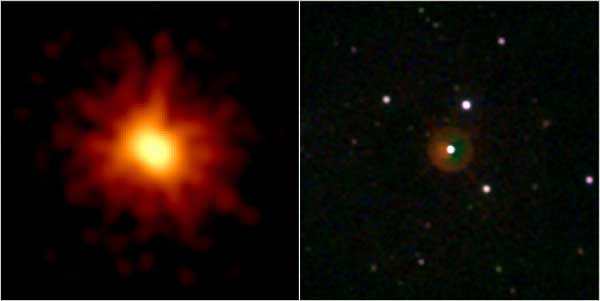
Scientists (astronomers and astrophysicists, actually) announced last week that a star in a heretofore unknown galaxy exploded about 7.5 billion years ago. The light from the explosion finally reached earth last Wednesday, about 2:12 a.m. (presumably EDT). The exploding star, situated about half way to the edge of the known universe, was the brightest gamma ray burst ever recorded. It was so bright, in fact, that people out skywatching could have seen it. But apparently, no one did:
“Someone would have had to run out and look at it with a naked eye, but didn’t,” said [Neil] Gehrels, chief of NASA’s astroparticles physics lab at Goddard Space Flight Center in Greenbelt, Md. The starburst would have appeared as bright as some of the stars in the handle of the Little Dipper constellation, said Penn State University astronomer David Burrows. How it looked wasn’t remarkable, but the distance traveled was.
Luckily, NASA’s Swift satellite was watching. It detected the first traces of the gamma ray burst, and alerted telescopes on earth (some of them controlled robotically) to train their cyclopean gazes toward the constellation Bootes, where at least the afterglow of the explosion could be imaged.
Update: a short movie of the burst, and some more information about what causes gamma ray bursts, is at NASA science news.
